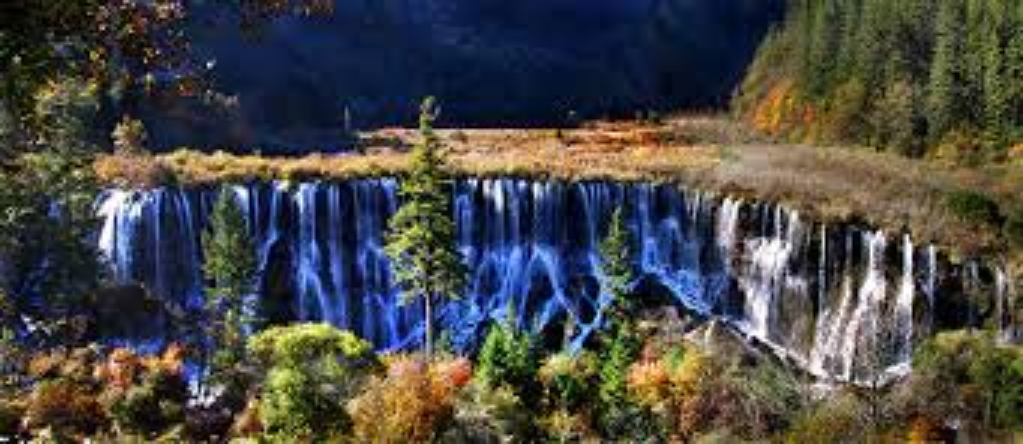
Interesting Facts about Jiuzhaigou Valley
Jiuzhaigou Valley, located in the northern part of Sichuan Province, China, is a mesmerizing natural wonder renowned for its stunning alpine landscapes. Its name, meaning "Nine Village Valley," comes from the nine Tibetan villages scattered throughout the area. This UNESCO World Heritage Site captivates visitors with its ethereal beauty, boasting a symphony of vibrant turquoise lakes, cascading waterfalls, and verdant forests.
Jiuzhaigou Valley's Unique Features
Its superb landscapes are particularly interesting for their series of narrow conic karst land forms and spectacular waterfalls. Let's delve into the unique features that make Jiuzhaigou a true natural masterpiece:
1. Travertine Pools and Lakes
The valley's most striking feature is its collection of colorful lakes, locally called "Haizi," meaning "son of the sea." These water bodies owe their existence to a fascinating interplay of geological processes:
- Glacial Activity: Thousands of years ago, glaciers carved out deep valleys and left behind moraines (glacial debris) that acted as natural dams.
- Karst Topography: The underlying bedrock is primarily limestone, a soluble rock. Over time, rainwater, slightly acidic due to dissolved carbon dioxide, eroded the limestone, creating fissures and underground channels.
- Travertine Formation: As calcium carbonate-rich water flows through the limestone, it deposits travertine, a form of limestone. This deposition occurs over long periods, forming natural dams and barriers within the lakes, creating the multi-leveled pools that Jiuzhaigou is famous for.
The water's vivid colors, ranging from turquoise to emerald green and azure blue, are attributed to several factors:
- Light Scattering: The crystal-clear water reflects the blue sky, while suspended calcium carbonate particles scatter sunlight, enhancing the blue and green hues.
- Aquatic Vegetation: Algae and other aquatic plants living in the lakes contribute to the spectrum of colors, depending on their depth and density.
2. Cascading Waterfalls
Jiuzhaigou is a paradise of waterfalls, each with its unique charm:
- Nuorilang Waterfall: The largest and perhaps most impressive waterfall in the valley, Nuorilang plunges over a travertine cliff, creating a thunderous spectacle. Its Tibetan name translates to "male power."
- Pearl Waterfall: This waterfall earns its name from the way the water cascades over a wide, gently sloping rock face, resembling a cascade of pearls.
- Shuizheng Waterfall: Located at the end of the Rize Valley, this waterfall drops in stages, framed by lush vegetation.
These waterfalls not only enhance the visual splendor of Jiuzhaigou but also contribute to the constant water flow and oxygenation of the lakes, essential for maintaining the delicate ecosystem.
3. Diverse Flora and Fauna
Jiuzhaigou Valley is nestled within a temperate broadleaf and mixed forest ecoregion, resulting in a rich diversity of plant and animal life:
| Flora | Fauna |
|---|---|
|
- Giant pandas - Sichuan golden monkeys - Rhododendrons - Bamboo groves |
- Sichuan takins - Musk deer - Over 140 bird species, including the blood pheasant |
- Giant Pandas: This iconic species finds refuge in the bamboo forests of Jiuzhaigou.
- Sichuan Takin: A large, muscular ungulate, the Sichuan takin is well-adapted to the steep slopes of the valley.
- Birdlife: The valley is a haven for birdwatchers, with numerous species, including the vibrant blood pheasant, gracing its skies and forests.
Preservation and Tourism
Jiuzhaigou's fragile ecosystem is carefully protected through various measures:
- Limited Visitor Numbers: To minimize human impact, daily visitor numbers are restricted.
- Designated Walking Trails: Visitors are required to stay on designated trails to prevent erosion and damage to vegetation.
- Sustainable Practices: Efforts are in place to promote sustainable tourism practices, including waste management and environmental education.
FAQs
1. What is the best time to visit Jiuzhaigou Valley?
The best time to visit is during autumn (September-October) when the foliage bursts into a riot of colors, creating a breathtaking spectacle. Spring (April-May) is another excellent time to witness the blooming rhododendrons.
2. How do I get to Jiuzhaigou Valley?
The most convenient way to reach Jiuzhaigou is by flying to Jiuzhai Huanglong Airport (JZH) and taking a bus or taxi to the valley.
3. Are there accommodations available in Jiuzhaigou Valley?
Yes, there are various accommodation options available within the valley and in nearby towns, ranging from budget-friendly guesthouses to upscale hotels.
Jiuzhaigou Valley is a testament to the awe-inspiring power of nature. Its unique landscapes, vibrant colors, and diverse wildlife offer a sensory experience that will remain etched in your memory for a lifetime.
note: This return of all, without the author's permission, may not be reproduced